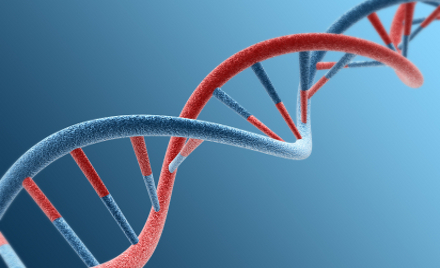The difference between DNA & RNA
STARLOG.COM DNA & RNA
The difference between DNA & RNA
DNA and RNA are both nucleic acids that store and transmit genetic information. However, they have different structures, functions, and properties. Here are some of the main differences between DNA and RNA:
- Sugar: DNA has a sugar called deoxyribose, which lacks an oxygen atom on the second carbon of the ring. RNA has a sugar called ribose, which has an oxygen atom on the second carbon of the ring. This makes RNA more reactive and less stable than DNA 1.
- Strands: DNA is a double-stranded molecule, which means it has two complementary strands of nucleotides that form a double helix shape. You can think of it as 2 people going round and round in circles, whereas RNA is only 1 person spinning. The strands are held together by hydrogen bonds between the bases. RNA is usually a single-stranded molecule, which means it has only one strand of nucleotides that can fold into various shapes. Some RNA molecules can form double-stranded regions by base pairing with themselves or other RNA molecules 12.
- Bases: DNA has four bases: adenine (A), thymine
- Function: DNA is mainly responsible for storing and transmitting genetic information from one generation to the next. It also regulates the expression of genes by controlling the synthesis of RNA and proteins. RNA is mainly responsible for carrying out the instructions encoded in DNA by acting as a messenger, a template, a catalyst, or a regulator. RNA can also act as a genetic material in some viruses and primitive organisms 123.
- Location: DNA is mostly found in the nucleus of eukaryotic cells, where it is organized into chromosomes. Some DNA can also be found in the mitochondria and chloroplasts of eukaryotic cells, as well as in the cytoplasm of prokaryotic cells. RNA is mostly found in the cytoplasm of both eukaryotic and prokaryotic cells, where it interacts with ribosomes and other molecules to perform its functions. Some RNA can also be found in the nucleus of eukaryotic cells, where it participates in the processing and modification of DNA 123.
- Variety: DNA is a single type of molecule that has a universal structure and function across all living organisms. RNA is a diverse group of molecules that have different structures and functions depending on their roles and types. There are three main types of RNA: messenger RNA (mRNA), transfer RNA (tRNA), and ribosomal RNA (rRNA). There are also many other types of RNA, such as microRNA (miRNA), small interfering RNA (siRNA), small nuclear RNA (snRNA), small nucleolar RNA (snoRNA), etc 123.
If you want to know more about DNA we have multiple posts about DNA. One of the more popular posts is What is DNA.

Comments
Post a Comment